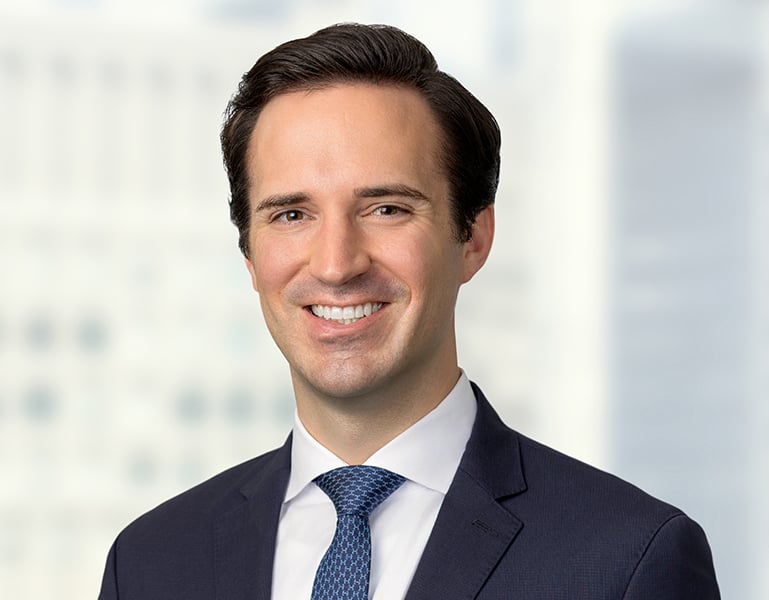“Skyrocketing” Medicare Part B Claims Submissions on Skin Substitutes
The Department of Health and Human Services Office of Inspector General (OIG) recently issued a report focused on what it characterized as concerning trends related to Medicare Part B claims submissions for skin substitutes, i.e., skin grafts. Skin substitutes have become a critical part of wound care and tissue regeneration and are increasingly a part of patient treatment plans. In the report, “Medicare Part B Payment Trends for Skin Substitutes Raise Major Concerns About Fraud, Waste, and Abuse,” the OIG highlights several billing and utilization patterns it views as consistent with fraud, waste, and abuse – signaling to the United States health care system that skin substitutes are now being closely scrutinized by the Department of Health and Human Services (HHS) and Department of Justice.
The OIG’s report contends that Medicare Part B reimbursement for skin substitutes has “skyrocketed” recently at what it characterizes as an unprecedented and alarming rate. Medicare Part B covers medically necessary skin substitutes at 106 percent of the average sales price (ASP). Since March 2023, Part B expenditures on skin substitutes have increased 640 percent, surpassing $10 billion in annual spending in 2024 and accounting for over 15 percent of all Part B spending that year.
The report identifies several spending trends that raise its concerns, including the rise “in the number of enrollees with skin substitute claims and the amount of product billed for each enrollee, particularly in home care,” where costs per enrollee were nearly four times higher than in-office costs. A “massive gap in spending” between Medicare Part B and Medicare Advantage has also drawn the government’s scrutiny, with Advantage constituting a fraction of claims submissions and spending on skin substitutes compared to Part B’s. Finally, the alleged “steep rise in the cost of individual skin substitutes combined with providers’ propensity to shift to more and more expensive products” have drawn the OIG’s, and consequently DOJ’s, focus. The report notes that “manufacturers’ ability to quickly bring new skin substitutes to the market compared to typical products paid using ASP” and, more alarmingly, what it characterizes as “financial incentives that make certain products more attractive to providers,” are driving these trends.
The OIG also offers insight into why it believes skin substitute billing schemes are now a problem and appropriate for government enforcement: purported bad actors can “quickly get paid tens of millions of dollars when billing for just a small number of [Medicare] Part B enrollees.”
With this in mind, Medicare and other federal payor claims resulting from skin substitute wound care are likely to draw the government’s interest, in turn leading to investigations and, in some cases, indictments. In fact, the substantial claims submissions to date have led the OIG, working closely with DOJ, to charge numerous purported fraud schemes arises from billing for skin substitutes. An Arizona couple pled guilty this year to over $1.2 billion in fraudulent claims submitted to Medicare and others for what they admitted were medically unnecessary skin substitutes. And this fall, the grand jury in the Southern District of Texas indicted a podiatrist and his clinic’s CEO, alleging $90 million in skin substitute Medicare claims for services that were not medically necessary. The case is pending and set for trial in the Houston Division.
The report goes beyond highlighting HHS’s and DOJ’s focus on skin substitute claims for investigation and prosecution. It also highlights perceived red flags associated with skin substitute claims that now trigger alarms and will result in this close scrutiny. The factors identified in the report include (1) new providers whose claims submissions for wound care management include substantial skin substitutes billings, (2) providers submitting multiple skin substitute claims for a single date—viewed by OIG as an attempt to circumvent Medicare’s automatic rejection of claims over $100,000, (3) providers using skin substitutes for non-approved conditions or in what is viewed as excessive quantities, (4) providers not first utilizing what the government considers more conservative treatments, and (5) providers billing for skin substitutes when it is out of the scope of their specific specialties.
In the wake of the OIG’s report, it is clear that claims for skin substitutes—whether submitted to Medicare, Tricare, or any other federal payor—have become a major area of investigative focus, and possible prosecution, by the federal government. The report amounts to a playbook to wound care providers using skin substitutes in their treatment regimens for what may subject them to government scrutiny for perceived fraud, waste, and abuse. These providers and other professionals working with them, including billing companies and anyone connected to these services or related claims submissions, are cautioned to exercise heightened care in their patient treatment and billing practices resulting from that treatment. More than ever, providers should update and enforce all relevant compliance training and protocols, ensure patient files are adequately documented for medical necessity and that all claims submissions are consistent with that documentation, and of course consult counsel as needed with questions and concerns. For health care providers and those working with them, these protective actions have become as essential to their practices as patient care itself.
If you have any questions about this article, please contact Jeffrey Ansley at jansley@vedderprice.com, Arianna Goodman at agoodman@vedderprice.com, Katherine Devlin at kdevlin@vedderprice.com, Adam Farrell at afarrell@vedderprice.com or any other Vedder Price attorney with whom you have worked.
Vedder Thinking | Articles “Skyrocketing” Medicare Part B Claims Submissions on Skin Substitutes
Article
October 31, 2025
The Department of Health and Human Services Office of Inspector General (OIG) recently issued a report focused on what it characterized as concerning trends related to Medicare Part B claims submissions for skin substitutes, i.e., skin grafts. Skin substitutes have become a critical part of wound care and tissue regeneration and are increasingly a part of patient treatment plans. In the report, “Medicare Part B Payment Trends for Skin Substitutes Raise Major Concerns About Fraud, Waste, and Abuse,” the OIG highlights several billing and utilization patterns it views as consistent with fraud, waste, and abuse – signaling to the United States health care system that skin substitutes are now being closely scrutinized by the Department of Health and Human Services (HHS) and Department of Justice.
The OIG’s report contends that Medicare Part B reimbursement for skin substitutes has “skyrocketed” recently at what it characterizes as an unprecedented and alarming rate. Medicare Part B covers medically necessary skin substitutes at 106 percent of the average sales price (ASP). Since March 2023, Part B expenditures on skin substitutes have increased 640 percent, surpassing $10 billion in annual spending in 2024 and accounting for over 15 percent of all Part B spending that year.
The report identifies several spending trends that raise its concerns, including the rise “in the number of enrollees with skin substitute claims and the amount of product billed for each enrollee, particularly in home care,” where costs per enrollee were nearly four times higher than in-office costs. A “massive gap in spending” between Medicare Part B and Medicare Advantage has also drawn the government’s scrutiny, with Advantage constituting a fraction of claims submissions and spending on skin substitutes compared to Part B’s. Finally, the alleged “steep rise in the cost of individual skin substitutes combined with providers’ propensity to shift to more and more expensive products” have drawn the OIG’s, and consequently DOJ’s, focus. The report notes that “manufacturers’ ability to quickly bring new skin substitutes to the market compared to typical products paid using ASP” and, more alarmingly, what it characterizes as “financial incentives that make certain products more attractive to providers,” are driving these trends.
The OIG also offers insight into why it believes skin substitute billing schemes are now a problem and appropriate for government enforcement: purported bad actors can “quickly get paid tens of millions of dollars when billing for just a small number of [Medicare] Part B enrollees.”
With this in mind, Medicare and other federal payor claims resulting from skin substitute wound care are likely to draw the government’s interest, in turn leading to investigations and, in some cases, indictments. In fact, the substantial claims submissions to date have led the OIG, working closely with DOJ, to charge numerous purported fraud schemes arises from billing for skin substitutes. An Arizona couple pled guilty this year to over $1.2 billion in fraudulent claims submitted to Medicare and others for what they admitted were medically unnecessary skin substitutes. And this fall, the grand jury in the Southern District of Texas indicted a podiatrist and his clinic’s CEO, alleging $90 million in skin substitute Medicare claims for services that were not medically necessary. The case is pending and set for trial in the Houston Division.
The report goes beyond highlighting HHS’s and DOJ’s focus on skin substitute claims for investigation and prosecution. It also highlights perceived red flags associated with skin substitute claims that now trigger alarms and will result in this close scrutiny. The factors identified in the report include (1) new providers whose claims submissions for wound care management include substantial skin substitutes billings, (2) providers submitting multiple skin substitute claims for a single date—viewed by OIG as an attempt to circumvent Medicare’s automatic rejection of claims over $100,000, (3) providers using skin substitutes for non-approved conditions or in what is viewed as excessive quantities, (4) providers not first utilizing what the government considers more conservative treatments, and (5) providers billing for skin substitutes when it is out of the scope of their specific specialties.
In the wake of the OIG’s report, it is clear that claims for skin substitutes—whether submitted to Medicare, Tricare, or any other federal payor—have become a major area of investigative focus, and possible prosecution, by the federal government. The report amounts to a playbook to wound care providers using skin substitutes in their treatment regimens for what may subject them to government scrutiny for perceived fraud, waste, and abuse. These providers and other professionals working with them, including billing companies and anyone connected to these services or related claims submissions, are cautioned to exercise heightened care in their patient treatment and billing practices resulting from that treatment. More than ever, providers should update and enforce all relevant compliance training and protocols, ensure patient files are adequately documented for medical necessity and that all claims submissions are consistent with that documentation, and of course consult counsel as needed with questions and concerns. For health care providers and those working with them, these protective actions have become as essential to their practices as patient care itself.
If you have any questions about this article, please contact Jeffrey Ansley at jansley@vedderprice.com, Arianna Goodman at agoodman@vedderprice.com, Katherine Devlin at kdevlin@vedderprice.com, Adam Farrell at afarrell@vedderprice.com or any other Vedder Price attorney with whom you have worked.



